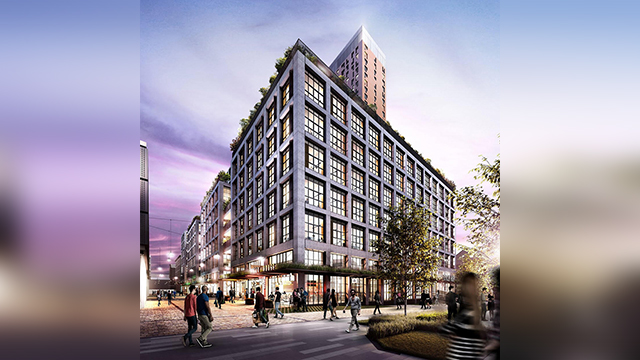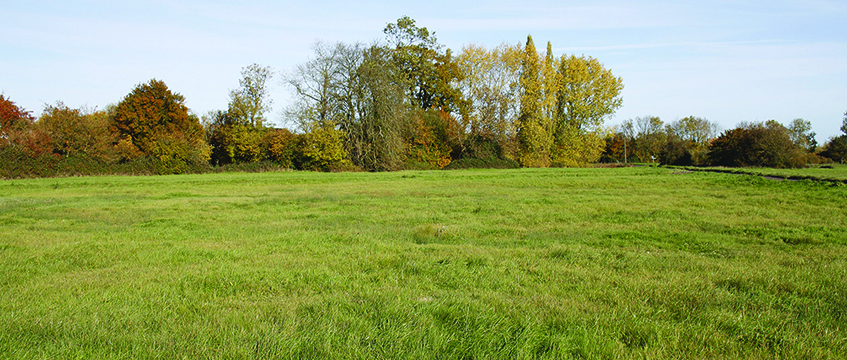Mainly for students: Grappling with green belts
Paul Collins outlines the issues raised by the always-controversial topic of green belts and their impact on development.
Mention the words “green belt” to members of the public and you will often get a strongly held view. For some, it is about the legitimacy of green belts in keeping open countryside around towns or cities. For others, they are seen as a stranglehold on land that is badly needed for new housing. Most surveyors hold strong views on green belts, too.
This article has been written with reference to further reading and video links as:
Paul Collins outlines the issues raised by the always-controversial topic of green belts and their impact on development.
Mention the words “green belt” to members of the public and you will often get a strongly held view. For some, it is about the legitimacy of green belts in keeping open countryside around towns or cities. For others, they are seen as a stranglehold on land that is badly needed for new housing. Most surveyors hold strong views on green belts, too.
This article has been written with reference to further reading and video links as:
a basis for self-study/CPD; or
a staff-led seminar discussion or debate focused on, say, a topic such as: “This house believes green belt policy is too simplistic and does not help Britain meet the challenges of all-round sustainable development – economic, social and environmental.”
Green belts: what are they?
Green belts are areas of rural land outside and surrounding major urban areas, with both an inner and outer edge. England has 14, Scotland has 12 and Wales just one. The modern idea of a green belt around garden cities dates back to 1898, and was put forward by Ebenezer Howard in his book Garden Cities of Tomorrow.
Letchworth, the first garden city to be developed, in the early years of the 20th century, was the first to have a green belt. Another followed around Welwyn Garden City in 1920.
However, it was the unrelenting outward growth of the suburbs, right across the UK, that led to governments of all political hues attaching great importance to green belts in all formal English planning policies since 1947. Scotland followed in 1957 with a green belt around Edinburgh.
What are their aims?
In the case of England, for example, central government has said that the fundamental aim of green belts is “to prevent urban sprawl by keeping land permanently open” and that the “essential characteristics of green belts are their openness and their permanence”.
The English National Planning Framework (NPPF) – as written in 2012, revised in 2018 and again in February 2019 – upholds the purpose and sanctity of green belts in planning policy. The NPPF sets out five key aims for green belts:
a) to check the unrestricted sprawl of large built-up areas;
b) to prevent neighbouring towns merging into one another;
c) to assist in safeguarding the countryside from encroachment;
d) to preserve the setting and special character of historic towns; and
e) to assist in urban regeneration, by encouraging the recycling of derelict and other urban land.
When any planning applications come forward in a green belt area, the NPPF states that local planning authorities “should ensure that substantial weight is given to any harm to the green belt” and that any new development is prima facie considered inappropriate, with the following exceptions:
a) buildings for agriculture and forestry;
b) the provision of appropriate facilities (in connection with the existing use of land or a change of use) for outdoor sport, outdoor recreation, cemeteries and burial grounds and allotments, as long as the facilities preserve the openness of the green belt and do not conflict with the purposes of including land within it;
c) the extension or alteration of a building provided that it does not result in disproportionate additions over and above the size of the original building;
d) the replacement of a building, provided the new building is for the same use and not materially larger than the one it replaces;
e) limited infilling in villages;
f) limited affordable housing for local community needs under policies set out in the development plan (including policies for rural exception sites); and
g) limited infilling or the partial or complete redevelopment of previously developed land, whether redundant or in continuing use (excluding temporary buildings), that would: not have a greater impact on the openness of the green belt than the existing development; or not cause substantial harm to the openness of the green belt, where the development would reuse previously developed land and contribute to meeting an identified affordable housing need within the area of the local planning authority.
Against this background, some other forms of development might be considered appropriate, “provided they preserve its openness and do not conflict with the purposes of including land within it”. These are:
a) mineral extraction;
b) engineering operations;
c) local transport infrastructure which can demonstrate a requirement for a green belt location;
d) the reuse of buildings provided that the buildings are of permanent and substantial construction;
e) material changes in the use of land (such as changes of use for outdoor sport or recreation, or for cemeteries and burial grounds); and
f) development brought forward under a Community Right to Build Order or Neighbourhood Development Order.
The way the most current NPPF is expressed suggests that the government does not currently expect any or many new green belts to be declared – but if they are, very careful planning grounds would have to be made. However, the newly revised versions are fully committed to providing strong protection to the environment. More generally, the chancellor in his Spring Statement talked about new laws to increase biodiversity.
Green belt locations
In terms of location and size, the map below shows the green belts in England, with London’s being the largest. In total area terms, they cover approximately 13% of the land mass in England.
What are the issues?
Some areas have them, some do not
What is clear from the map is that not all urban areas have them. Cambridge has a green belt, while Norwich does not. Leicester does not have one, nor does Ipswich, Hull, Exeter or Plymouth. Nottingham has a full green belt, which provides a green buffer against its neighbouring city, Derby. Derby, however, does not have a green belt on its western edge.
New development on green belt land
While green belt policies are strongly supported in local plans and through the development management process, there are many occasions in practice when exceptions are made. Very recent research by the London Green Belt Council has shown that more than 83% of local authorities are planning to build on the supposedly protected land.
At the same time, however, Kit Malthouse, minister for housing, communities and local government, says that building on green belt should be undertaken only as a last resort. Further, the NPPF states clearly that any changes to green belt boundaries should be made only where fully justified and supported by clear reasoned evidence of need.
Conclusion
Green belts are a much-debated subject on which strong views are held. Some are evidence-based and others more subjective.
England and the rest of the UK has an acute housing problem which often brings it into conflict with green belt protected land. There is no right or wrong answer as to whether we should or should not wholly protect or build on some green belt land – but arguably, like Brexit, the case for and against should not be down to heady rhetoric but factual evidence-based evaluation of needs, based on the three pillars of sustainability set out in the NPPF: economic, social and environmental. It is important to remember that, in practice, this is no easy thing to get entirely right: there will almost always be some measure of compromise.
Further reading
National Planning Policy Framework
Natural England and CPRE – Green Belts: a greener future (2010)
Report on London’s green belt by Alan Mace at LSE: A 21st century metropolitan green belt
EG comment by SEGRO chief executive David Sleath: “Sleath calls for full-scale review of London’s green belt”
CPRE: State of the Green Belt 2018
Lichfields commentary on the revised NPPF
Video exercise
To explore some of the key issues surrounding green belts, please watch the following five videos:
1. BBC news: 1.8 million homes to be built on greenfield sites
2. Campaign to Protect Rural England (CPRE)
3. Why are brownfields brown?
4. Express debate: We need to build on the green belt
5. LSE London: A 21st-century green belt
Before watching the videos, you may perhaps have held one of the following three views:
1. The green belt should be protected almost without exception and we should build on brownfield land;
2. We should be pragmatic about allowing development where it is needed; or
3. Green belts are an unnecessary and outdated concept.
Having watched the videos, has your view changed? If so, in what ways? Alternatively, have your views been reinforced – and, if so, why and how?
Jot down some notes on the subject and then watch this more extensive debate >>
You will see and hear four people argue the case for and against green belts – and in between. Having watched the debate, have your views changed or not?
Paul Collins is a senior lecturer at Nottingham Trent University. He welcomes suggestions for the Mainly for Students series and can be contacted at paul.collins@ntu.ac.uk











